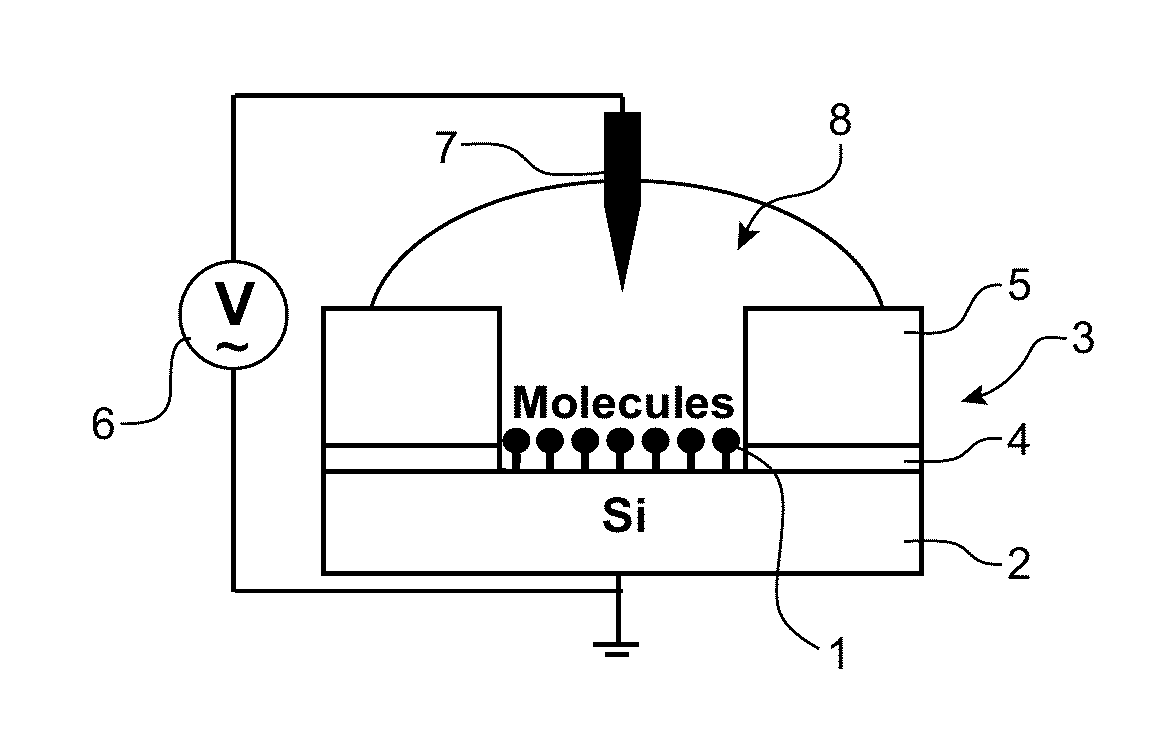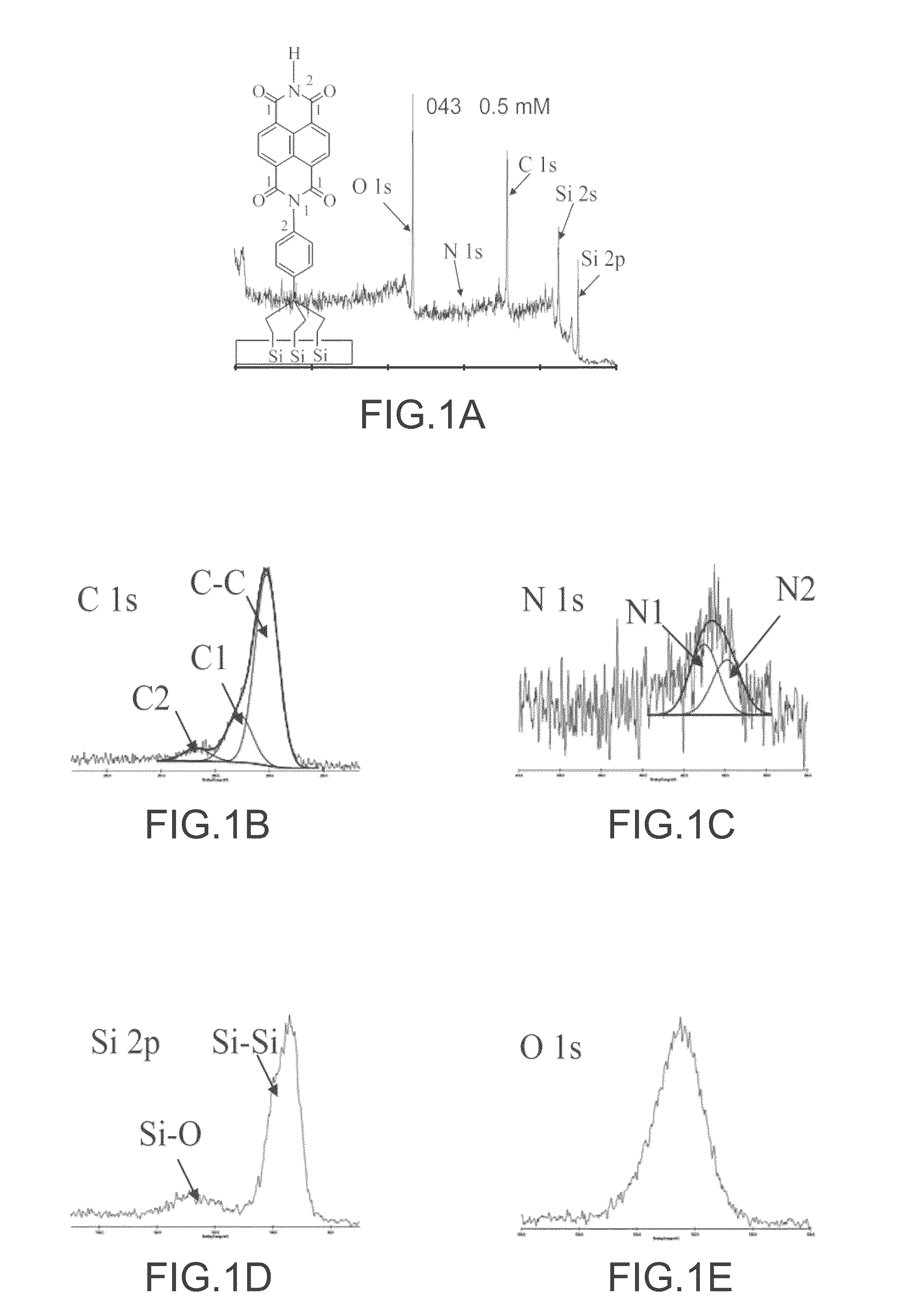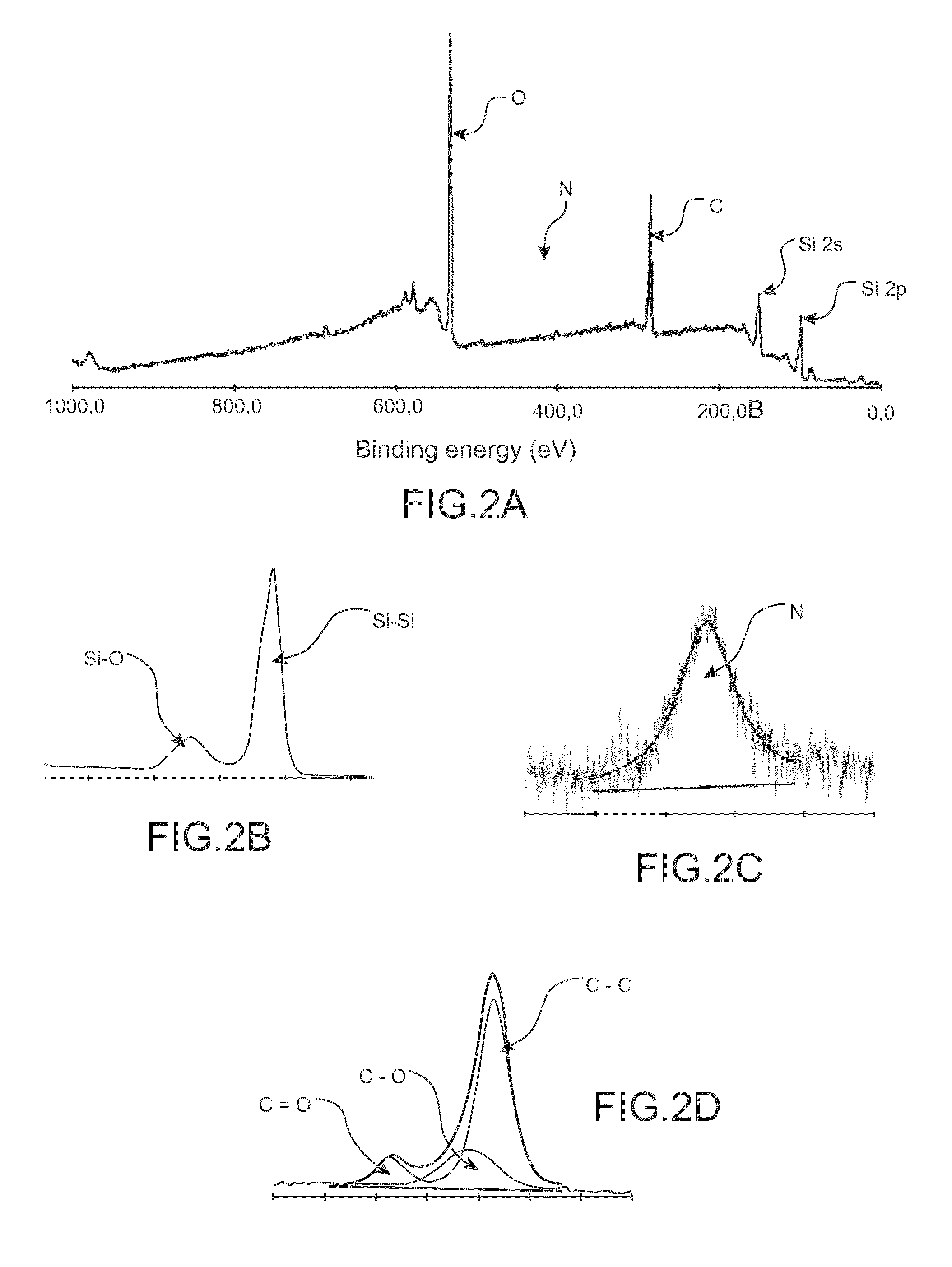Organic redox active compounds with reversible storage of charges and substrates and molecular memory devices comprising them
a technology of organic redox active compounds and substrates, which is applied in the direction of bulk negative resistance effect devices, organic chemistry, instruments, etc., can solve the problems of increasing the difficulty of reducing the size of these devices, unit cost, and the current technology of non-volatile memories based on semiconducting materials
- Summary
- Abstract
- Description
- Claims
- Application Information
AI Technical Summary
Benefits of technology
Problems solved by technology
Method used
Image
Examples
example 1
Synthesis of N-[4-(4-allylhepta-1,6-dien-4-yl)phenyl]-1,4,5,8-naphthalenetetracarboxydiimide (Molecule 1)
[0187]In this example, the synthesis of N-[4-(4-allylhepta-1,6-dien-4-yl)phenyl]-1,4,5,8-naphthalenetetracarboxydiimide is carried out in two steps. (Molecule 1 according to the invention).
Step 1: Synthesis of N-[4-(4-allylhepta-1,6-dien-4-yl)phenyl]-1,4,5,8-naphthalenetetracarboxyanhydride
[0188]In a two-neck round-bottom flask equipped with a dropping funnel and of a condenser of the Dean-Starck type, 1,4,5,8-naphthalene-tetracarboxydianhydride (1 equiv. 5.9 g, 22 mmol) is dissolved in 100 mL of anhydrous DMF at 160° C. 4-(4-allylhepta-1,6-dien-4-yl) aniline (1 equiv. 5 g, 22 mmol) dissolved beforehand in 50 mL of anhydrous DMF is added dropwise to the anhydride solution. The reaction is refluxed for 12 hrs. At the end of the reflux, the DMF is evaporated in vacuo and the product is then purified with a silica gel chromatography column with a mixture of ethyl acetate and dichlor...
example 2
Synthesis of molecule 2 (with R=n-octyl). N-octyl-N-[4-(4-allylhepta-1,6-dien-4-yl)phenyl]-1,4,5,8-naphthalene tetracarboxydiimide
[0191]In a two-neck round-bottom flask equipped with a dropping funnel and a condenser of the Dean-Starck type, N-octyl-1,8-naphthalene-dicarboximide 4,5-dicarboxyanhydride, (1 equiv., 1 g, 2.64 mmol) is dissolved in 50 mL of anhydrous DMF at 160° C. 4-(4-allylhepta-1,6-dien-4-yl) aniline (1 equiv., 0.6 g, 2.64 mmol) dissolved beforehand in 10 mL of anhydrous DMF is added dropwise to the anhydride solution. The reaction is refluxed for 15 hrs. At the end of the reflux, the DMF is evaporated in vacuo and the product is then purified with a silica gel chromatography column with a mixture of ethyl acetate and dichloromethane (1 / 1 v / v). A pink powder is obtained which is washed with methanol. (1.13 g, yield: 73%).
[0192]1H-NMR (CHCl3-d, 62.5 MHz, ppm): δ 14.57 (CH3) 23.10 (CH2), 27.55 (CH2), 28.54 (CH2), 29.66 (CH2) 29.75 (CH2), 32.26 (CH2), 41.52 (Cq), 42.32 ...
example 3
Synthesis of Molecule 3 (with R=n-dodecyl). N-dodecyl-N-[4-(4-allylhepta-1,6-dien-4-yl)phenyl]-1,4,5,8-naphthalene tetracarboxy diimide
[0193]In a two-neck round-bottom flask equipped with a dropping funnel and a condenser of the Dean-Starck type N-dodecyl-1,8-naphthalene dicarboximide 4,5-dicarboxyanhydride, (1 equiv.) is dissolved in 50 mL of anhydrous DMF at 160° C. 4-(4-allylhepta-1,6-dien-4-yl) aniline (1 equiv.) dissolved beforehand in 10 mL of anhydrous DMF is added dropwise to the anhydride solution. The reaction is refluxed for 14 h. At the end of the reflux the DMF is evaporated in vacuo and the product is then purified with a silica gel chromatography column with a mixture of ethyl acetate and dichloromethane (1 / 1 v / v). A pinkish powder is obtained which is washed with methanol.
PUM
 Login to View More
Login to View More Abstract
Description
Claims
Application Information
 Login to View More
Login to View More - R&D
- Intellectual Property
- Life Sciences
- Materials
- Tech Scout
- Unparalleled Data Quality
- Higher Quality Content
- 60% Fewer Hallucinations
Browse by: Latest US Patents, China's latest patents, Technical Efficacy Thesaurus, Application Domain, Technology Topic, Popular Technical Reports.
© 2025 PatSnap. All rights reserved.Legal|Privacy policy|Modern Slavery Act Transparency Statement|Sitemap|About US| Contact US: help@patsnap.com



